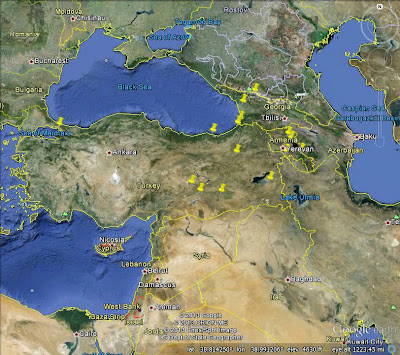My blog
title: Norm Crisp on Fly Fishing and his
Travel Adventures hint at my, some would say obsession, with seeing what is
around the next bend or over the next hill. Turns out, according to an article
in National Geographic, some of us
might indeed have a gene for wanderlust that makes us keep looking. For whatever reason, I do tend to do my fair
share of wandering. Roaming the world
is great fun, but what about those that can’t be with you? A Satellite
Messenger Systems (SMS) can provide those still at home a way to join you.
Several
years ago I had never heard of these systems. My fellow trout bum, Duane Brandt
and I had decided to “camp” at a motel near Montana’s Big Hole river for the
night. It looked like rain and I didn’t
feel like sleeping under another picnic table. The gentleman in the room next
to us had also decided not to sleep in the rough. He invited us to join him for a beer at the honky-tonk
attached to the motel. Right after ordering, he took out this palm sized orange
thing, pushed a button on it and set it down on the bar.
Before we could order
our next beer his cell phone rang. The one side of the conversion I could hear
went something like this: “Hi honey! Yah, it’s drizzling here. It’s the local beer joint. OK, I’ll check in tomorrow some time. By, I love you.”
Intrigued by what we heard, I asked, “How did she know you were having a beer?” He handed me the orange thing – a SPOT - and said: “This
thing gave her the co-ordinates of exactly where I am and gave her a link to my
location on Google Earth. She looked at
the map, put 2 and 2 together and the answer was beer.”
As much as I’m always looking to see what is
over the next hill, I realized I needed one of these things to share my trips
with me friends who have to be at home in a soft bed!
A SPOT is a
Satellite Messenger System. When
activated, the SPOT transmits a signal, via the commercial satellite communication
network, to up to 10 of your per-determined contacts. While not a true Personal Locator Beacon
(PLB) – SMS’s doesn’t transmit signals on internationally recognized distress
frequencies – SPOT has an SOS feature that sends a message and your location to
a designated contact and the local emergency response group. Unless you are traveling into extremely
dangerous locations or have very limited support, a PLB likely isn’t
necessary. SPOT does have a “HELP” feature that lets you send a
notification and location to your designated contact that you have a problem
but it is not life threatening.
So far in my
travels I’ve never needed the SOS or HELP features of my SPOT. But on my
travels the “CHECK IN” button gets a workout. This button lets me send my
predetermined message “All is well.
Having a great adventure” to my SO, fellow trout bum Duane, and a
few other friends. The web master also receives my check in message and posts them for
me on Facebook. Since I have the freedom
and make the time to look around the next bend no matter where in the world it
might be, my “check ins” and posting them on Facebook allow me to share my
adventure with my family and friends around the world. Coupling the
 | |
| Locations visited on my trip |
exact records from my SPOT check
ins of where I’ve been with local photos and entries in
my travel journals: "Ararat
was covered in clouds but as I sit here they are clearing. It is something to see. The most amazing mt I've ever seen!" confirmed that my decision "to
invest in memories and not in things " was the right choice for me.
My partner
Kathy is going to China at the end of May.
I’m staying home to hang with the dogs.
Kathy is taking the SPOT with her.
I may not be able to see the Terracotta Warriors, but I’ll be able see
via a Google Earth map, of exactly where they (Kathy and the Warriors) are.









